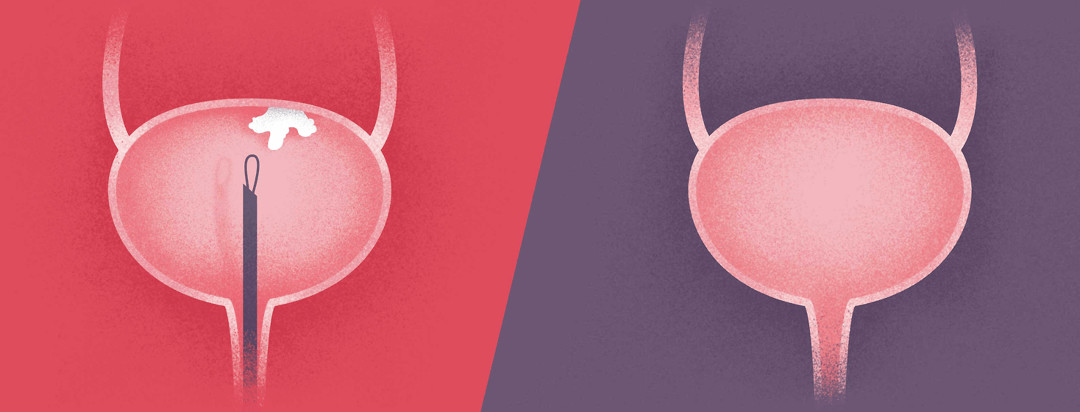My TURBT Experience
The operation is called a transurethral resection of bladder tumor (TURBT). Your surgeon removes the tumor in your bladder through the urethra. The urethra is the tube that carries urine from the bladder to the outside of the body. You undergo a TURBT under a general anesthetic at the same time as the test that looks inside the bladder, called a cystoscopy.1
I had no bladder cancer symptoms
My bladder cancer was actually found during my every 3-month scans for my lung cancer. I had CT scans of my abdomen and my chest. I had no symptoms and was in shock. My oncologist sent me to a urologist right away.
Cystoscopy followed by my first TURBT
The first step was a cystoscopy in the office environment. This is where a tube or catheter is inserted into your bladder that has a camera at the end of it, so your physician has a clear view of what is going on. Of course, they found my tumor. I was told I would have to have a TURBT to remove the tumor.
A TURBT is done under general anesthesia so it did require pre-admission testing - bloodwork, chest X-ray, and meeting with a nurse to go over my history.
Upon arrival at the hospital for my TURBT, I was taken to pre-op. I do have a port where I receive medications for my lung cancer, and I usually have blood draws from the port as well. However, during surgery, there is a chance that they have to infuse a large amount of fluid into your IV, so my port is not used. They have to use an IV in a vein. After the IV is inserted, an array of people come in to see you - the anesthesiology team, the operating room nurses, your doctor, and possibly your oncologist. Quite frankly, my veins are horrible so this is the worst part for me.
Recovery: the first few days after
When it was time to roll you to the operating room, the anesthesiology team injected a sedative. I remember turning the corner down a long hall, and that was it - sound asleep.
I awoke to bladder spasms and could feel a catheter being inserted. After a TURBT, you are usually discharged the same day. However, if it is a large tumor, you may stay overnight.
Cramping, frequent urination, and blood in my urine
The first few days were a bit rough. Cramping, a constant urge to pee, and sometimes blood when I went to the bathroom. Your doctor will probably give you a prescription for oxybutynin. This medication is used to treat overactive bladder and will help with cramping. This is all normal.
Catheter removal and recovery
My physician instructed me to rest for 3 to 5 days with NO lifting or excessive walking. I did come home with a catheter so this was not a problem. I had a post-op appointment with my urologist four days later when they removed the catheter.
After that, I was instructed to begin walking a bit each day, adding on more distance each day but was told no lifting anything over 10 pounds for at least 6 weeks. The reason for this is because during the surgery the tumor is cut away and then it is cauterized to stop the bleeding.
I had no idea what to expect
Going into this surgery I had no idea what to expect. It was very uncomfortable (almost painful) at some points to have the catheter in but I think this was because it may have been touching a tender spot in my bladder. Some people tell me they had no problem with it.
Following the TURBT, the normal procedure is to have chemo injected directly into your bladder for 6 weeks. The two medications used are BCG and Mitomycin. I, personally, am allergic to both so I cannot have any type of treatment to prevent recurrence so I have a cystoscopy every three months and a TURBT every three months.
What was your TURBT experience like?
Best of luck to those of you just joining the club no one wants to join - but please let me know how your TURBT goes and any suggestions you may have to help others in the comments below, or share your story with the community.
Editor's Note: We are extremely saddened to say that on January 28, 2020, Jennifer Toth passed away. Jennifer was a passionate advocate for the bladder cancer community. She will be deeply missed.

Join the conversation